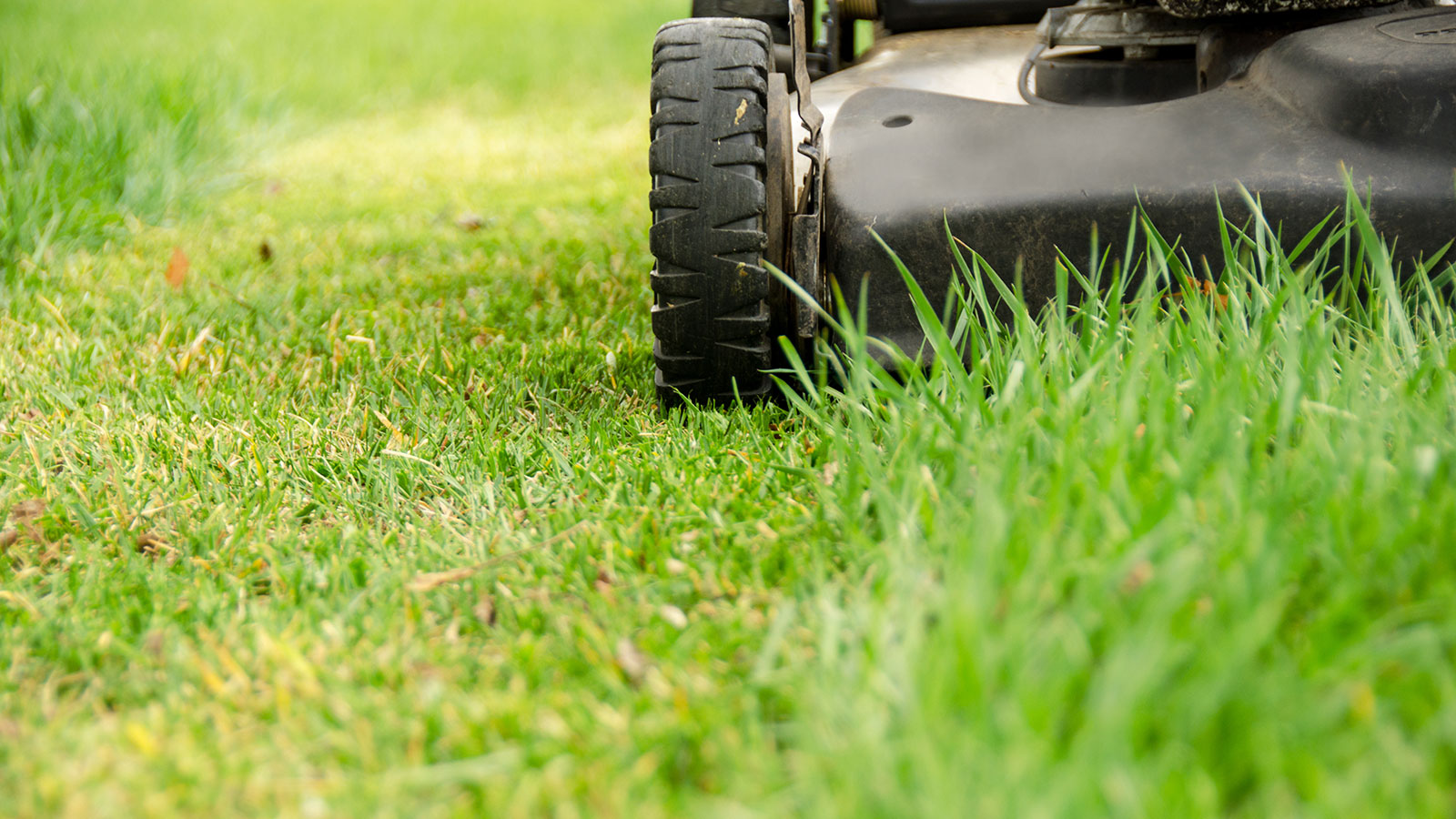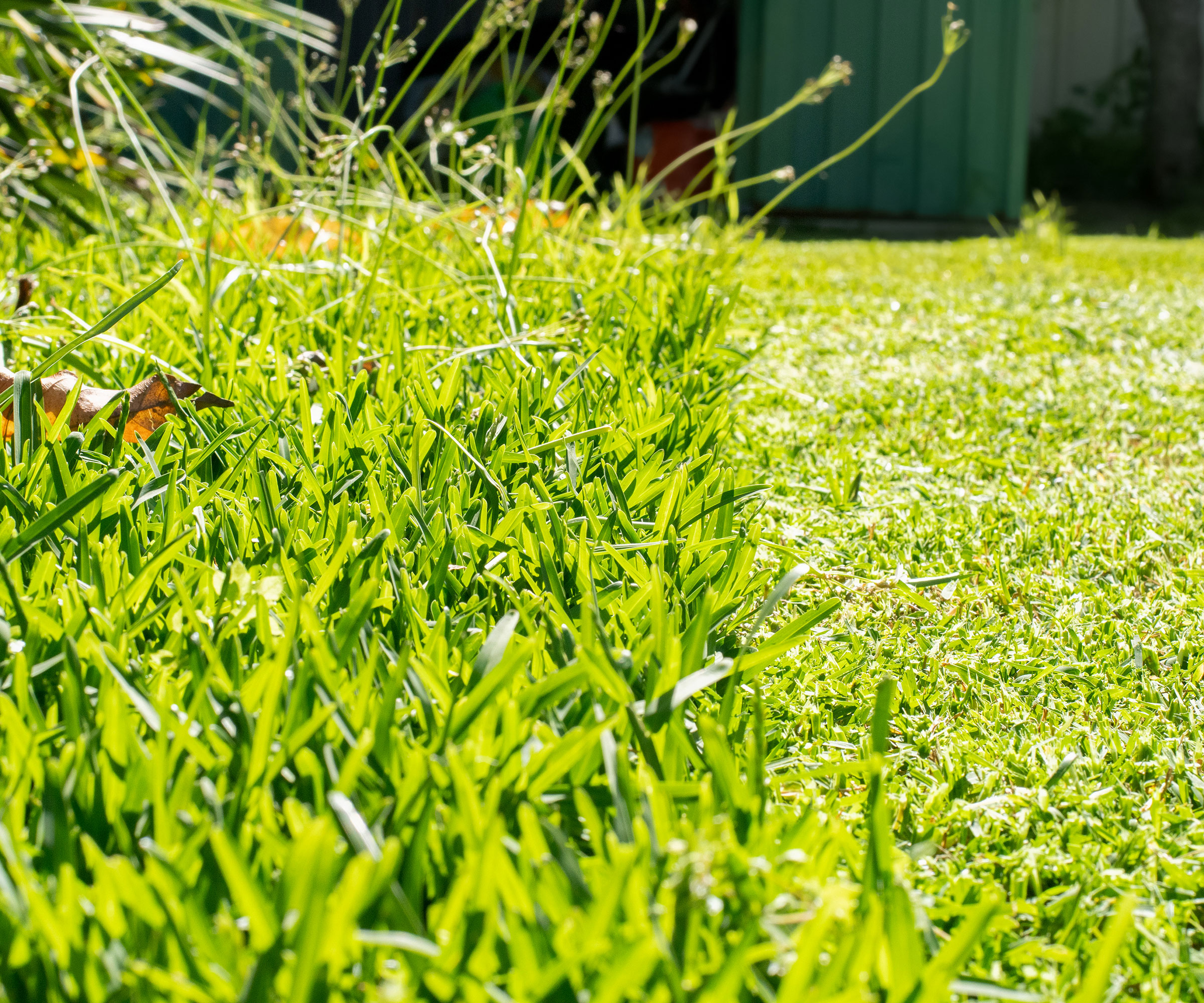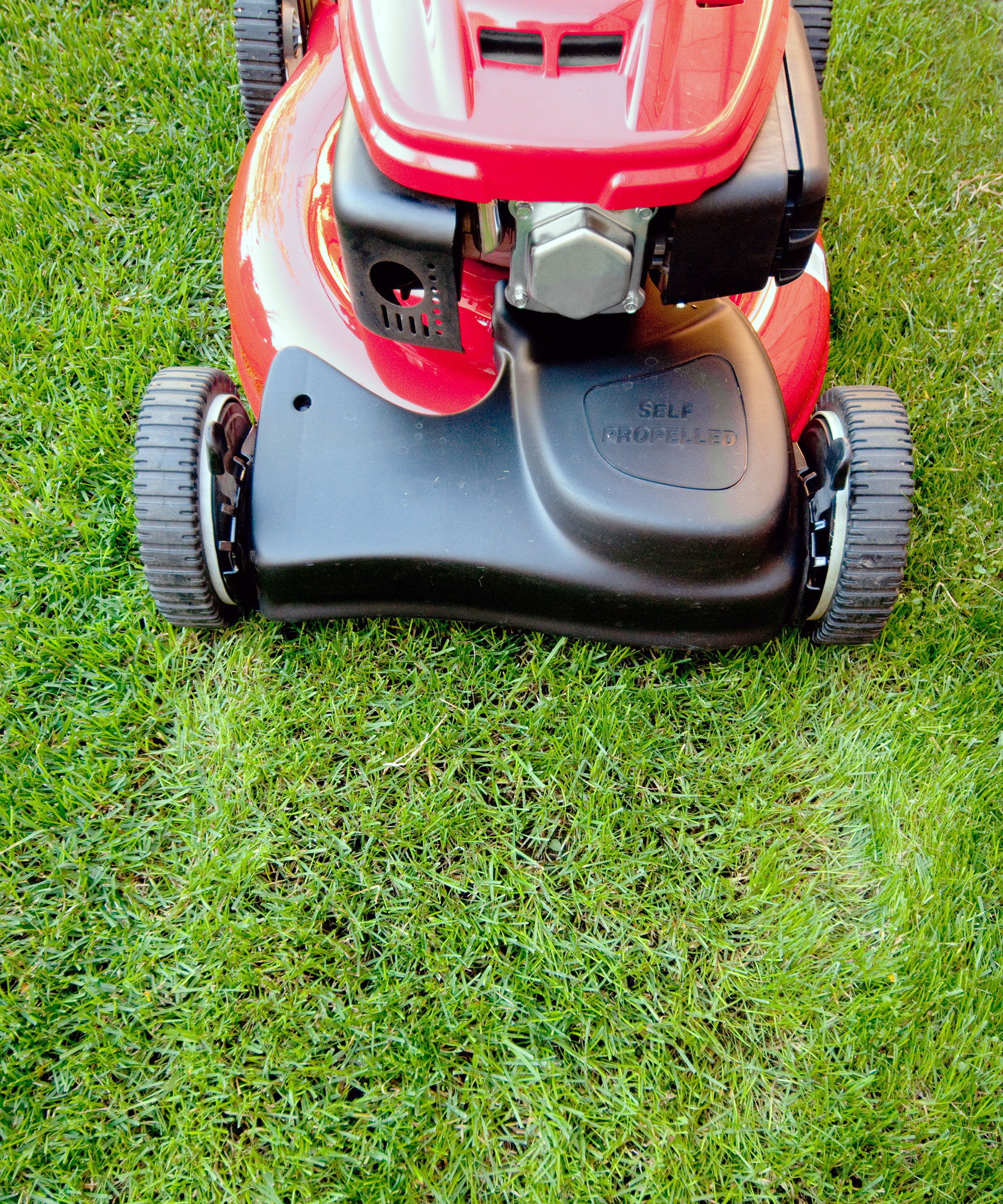
Knowing when to mow a lawn after overseeding can be tricky and you run the risk of undoing all of your hard work if you get it wrong.
An essential part of lawn maintenance, overseeding is a sure-fire way to thicken up a sparse lawn and fill in bare patches, but it’s not without its dilemmas. Once the grass seed has successfully germinated and started to grow with vigour, deciding on when to time the first cut can prove a headache, especially if you are a green-fingered novice. The thought of undoing all your hard work and soil preparation can be enough to put you off mowing altogether, and leaving it too late can cause problems for the health of your lawn and mower too.
Well, thankfully help is at hand with our comprehensive guide from leading lawn care experts and gardening professionals. Their failsafe advice will let you know when is the perfect time to cut newly germinated grass seed so you can grow your lawn with confidence.

When to mow after overseeding
A lush green lawn is a beautiful – and enviable – backyard feature, but it does take a little knowhow to achieve and maintain perfect results. Recognizing when to cut newly grown grass seed can make a huge difference to the long-term health of your lawn. Get it right and you can reduce the time and effort needed in future months and years.
‘After you lay down your seedlings, they will need time and the right environmental protection to grow,’ says John Caramanico Jr., owner of Caramanico Landscape. ‘They’ll need to acclimate and set roots before the first mow, so during the first two to four weeks post aerating and overseeding, don’t mow.’
‘After overseeding, you should look for consistent, robust growth across your lawn. In my experience, you're ready to mow when about 70-80% of the new grass is around 3 inches tall,’ says Bryan Clayton, CEO of lawn care specialists GreenPal. ‘Growth rates can vary based on grass type and growing conditions, but typically, you can expect to mow about 3-4 weeks after overseeding.’
Eric DeBoer, Ph.D, Agronomist at Simple Lawn Solutions agrees, ‘When overseeding a lawn, it's best to wait until the seedlings have reached a height of 3-4 inches before making your first cut,’ he says. ‘Hopefully, prior to seeding, the lawn was cut shorter than normal to allow a longer period between mowing, necessary for seedling emergence and vigour.’
The best way to cut with confidence after overseeding is with some forward planning. Eric continues, ‘One way to maximize the amount of growth that is allowed prior to the first mow would be to measure the height of cut (HOC) of your lawn mower at the highest setting. Take that number and multiply it by 1.5. Theoretically, you could wait until the lawn reaches that number (tallest HOC x 1.5) before mowing. At that height, you should not be scalping any grass if you're just mowing it back down to your tallest HOC on your mower. Then you can start dropping the HOC after that.’

How to get a neat cut after overseeding
Besides mowing when the newly germinated grass reaches an ideal height, there are a few extra steps you can take for a neat, professional finish.
‘Always make sure you are using a sharp mower blade,' says Eric DeBoer. 'You want the cuts made to the young grass to be as clean as possible. This will reduce plant water loss and allow for faster healing.’
Bryan Clayton also says, ‘Mowing during cooler parts of the day is preferable, as it puts less stress on the new grass. Also stick to a simple cutting pattern like mowing stripes, as these practices can help establish your newly overseeded lawn while minimizing disruption to the young grass plants.’
FAQs
Does how soon you can mow after overseeding depend on your grass type?
Growth rate for new grass varies depending on the season, weather conditions and the type of grass seed you have used for overseeding. Cool season grasses such as ryegrass and fescue can take around two weeks to germinate while warm season types – including Kentucky bluegrass and Zoysia – can take up to three or four weeks, so keep this in mind when planning when and how often to mow your lawn.
How long after overseeding can I walk on grass?
Giving your newly seeded lawn time to germinate, establish strong roots and put on a good amount of leaf growth is key to its future health and ensuring it grows green and thick.
To help maintain a lush, green lawn it is important to avoid crushing the young plants as this can delay their development or even kill them off altogether.
Aaron Samson, CEO of Lush Lawn explains, ‘Generally, once you’re done seeding you should limit foot traffic for at least 3-4 weeks. Cool-weather grasses usually take a couple of weeks to sprout but giving it a little longer to grow will help its root system to take hold.'
Whether you've overseeded your lawn as a means of repairing patches in the grass or you simply wanted to refresh its overall look, it's essential to give the grass seed time to grow well before you consider mowing it.
'By staying off the grass you will give any seedlings that haven’t sprouted (and that you can’t see) a chance to germinate,' says Aaron Samson. So avoid making a lawn care mistake and bide your time before reaching for the mower.







